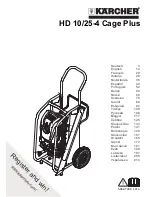
26
27
PRessuRe CanninG
VeGeTables
Pressure canning is the only safe method for canning vegeta-
bles .
young, tender, fresh vegetables, slightly immature, are better for
canning than those which are overripe. As a rule, vegetables are best
if canned immediately after picking, since flavor decreases upon
standing and often unpleasant color changes take place. Avoid bruising
vegetables because spoilage organisms grow more rapidly on bruised
vegetables than on unblemished ones.
Wash and prepare garden fresh vegetables as you would for cook-
ing.
To raw pack vegetables, simply place the prepared vegetables into
clean, hot Mason jars and cover with boiling water.
To hot pack vegetables, precook in boiling water until heated through.
Pack pre-cooked vegetables into clean, hot Mason jars and cover with
boiling water. Whenever possible, the precooking water should be
used as liquid to cover the vegetables after packing into Mason jars.
However, there are a few vegetables, such as greens and asparagus,
which make the cooking water bitter and undesirable to use.
When packing vegetables, leave 1-inch headspace in Mason jars.
Foods may be processed with or without salt. If salt is desired, use
only canning salt. Table salt contains a filler which may cause cloudi-
ness in bottom of jars. Add ½ teaspoon canning salt to each pint jar,
1 teaspoon to each quart jar, if desired.
Follow step-by-step directions beginning on page 10 for canning
procedure. Process specific vegetables according to the following
recipes.
When pressure canning at altitudes of 2,000 feet or below, process
according to specific recipe. When canning at higher altitudes, process
according to the following chart.
Altitude and Pressure Chart for Canning Vegetables
Altitude
Pounds of Pressure for Pints and Quarts
2,001 – 4,000 ft.
12 lbs.
4,001 – 6,000 ft.
13 lbs.
6,001 – 8,000 ft.
14 lbs.
Processing time is the same at all altitudes.
CANNING RECIPES: VEGETABLES
ASPARAGUS
Wash and drain asparagus. Remove tough ends and scales. Rinse.
Leave asparagus whole or cut into pieces.
Raw Pack: Pack raw asparagus tightly in clean, hot Mason
jars, leaving 1-inch headspace.
Hot Pack: Cover asparagus with boiling water and boil 2 or
3 minutes. Pack hot asparagus loosely in clean,
hot Mason jars, leaving 1-inch headspace.
Cover with boiling water, leaving 1-inch headspace. Adjust jar lids.
Process at 11 pounds pressure – Pints 30 minutes and Quarts 40
minutes. For processing above 2,000 feet altitude, see chart above
for recommended pounds of pressure.
BEANS OR PEAS—DRY
Sort out and discard any discolored seeds. Rehydrate beans or peas
using one of the following methods:
Place dry beans or peas in a large pot and cover with water.
Soak 12 to 18 hours in a cool place. Then drain.
Cover beans with boiling water in a saucepan. Boil 2 minutes,
remove from heat and soak 1 hour. Then drain.
Cover beans soaked by either method with fresh water and boil 30
minutes.
















































